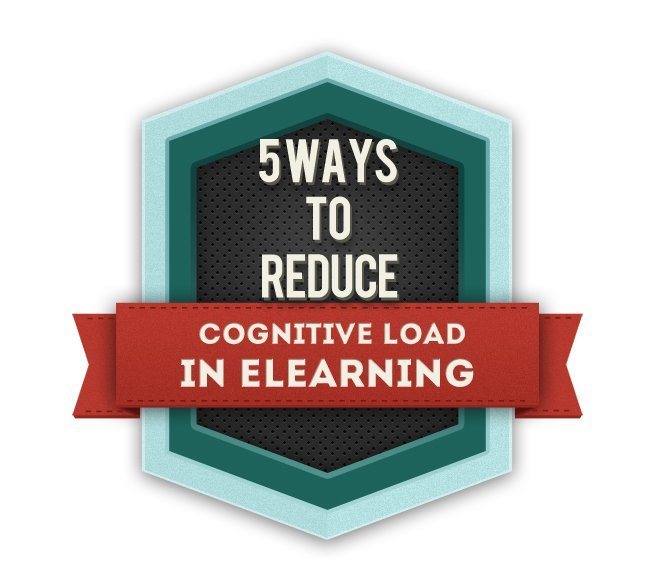3 Useful Memory Retention Tips
The concept of cognitive overload can be described—colloquially and literally—as TMI. In eLearning setups, TMI is involved with the amount of content rather than its inappropriately personal nature. There are three main types of cognitive load to keep in mind when developing eLearning courses: intrinsic, extrinsic, and germane. Individually, they each have the power to hinder knowledge retention. But if your course design inflicts all three, learners are likely to walk away more confused and overwhelmed than ever. First, let’s take a look at the types of cognitive load to consider, then move on to tips to improve memory retention.
Types Of Cognitive Load To Consider
Intrinsic loads are driven by the material itself. The more complex the subject is, the heavier its intrinsic cognitive load. Some subject matter is inherently for involvement, and more challenging than others, regardless of a learner's level of experience or background. However, you can make it easier to consume by shortening seat time for each training session and using more interactive resources. For instance, simulations that show the learner how to apply a skill instead of telling them how it’s done.
Extrinsic loads are involved with explanations, elaborations, diagrams, and study aids. While they’re helpful, they’re not essential to learning. Your content would still make sense without them. This type of load has more to do with the delivery format and design. For example, instead of simply creating a demo video to walk learners through the task, you use an overly complicated diagram.
Germane cognitive loads express the weight of converting knowledge into long-term memory via schemas and automation. It pertains to how the learner processes the information and how well they’re able to manipulate and organize concepts.
Tips To Improve Memory Retention And Lighten The Cognitive Load
1. Start With Segmentation
The whole idea behind cognitive load is limited, in the sense that we believe human beings can only take in a finite amount of information at a time. Think of it as a cup beneath a tap. Once the cup is full, the tap could keep running, but the water will just spill over and go to waste. It may even displace some of the initial water. In eLearning, it’s crucial to close the tap as soon as the cup fills up. It’s easier if you know the capacity of the cup in advance. Trainees can only absorb a set volume of content at a go. To prevent mental flooding, mix visual, verbal, and textual media, both for intrinsic and extrinsic loads. Many editors rush to minimize extrinsic content to improve memory retention, but in eLearning, extrinsic data is the "meat" of the course. Cutting down on both has the desired result of reducing germane cognitive loads. This is because there’s less mental processing to be done overall.
2. Break It Down, Chunk It Up
It can be hard to tell how much is too much. Run a little experiment, as high or low budget as you prefer. The upper-crust version may involve heart monitors, pulse readers, brainwave charts, and so on. The lower-end could just be to put people in a room and observe them carefully, recording their reactions for review at leisure. In both sets, expose participants to content and see how long they maintain focus before they drift off. Give them a passage to read, using heat maps to tell when their eyes start "slurring" and drifting. You could have them read aloud too. Note when they start to trip over words or mispronounce them from mental fatigue. Do the same test with an audio clip and a video clip. The results can help you gauge the optimal length for text blocks, videos, and sound clips. Try to stay within those cognitive limits. Split your content into chapters, modules, and microlearning chunks that avoid intellectual overload.
3. Careful Captioning
These days, most online videos come with closed captions. It’s not just for the differently-abled. It’s also for the average consumer who generally views these videos on their phones, in public spaces, with the sound off. Closed captioning assumes you can’t hear, so it includes both dialogue and extraneous sounds. However, if someone is both watching and listening, the redundant data can tire their brain. Record your captions and visuals on separate tracks, enabling the trainee to pick and choose. If they’re watching their video with sound, offer an option of no captions, open captions, or subtitles. This way, the trainee isn’t cluttering their mental space with duplicated content. If their training unit has a prerecorded voice-over, then the text on the screen should be minimal. Stick to a summary, or bullets listing the main points in active language. In this sense, redundancy is replaced by reinforcement, and that helps with knowledge retention.
Conclusion
Discussions on cognitive load are driven by a desire to cut it down. But sometimes, you want to take the opposite approach. You want to see how you can leverage existing mental loads to help trainees remember more of what they’ve learned. Begin by segmenting data into visual vs. verbal and including a healthy mix of both. Verbal covers video and audio clips, or narrated voice-overs. Visual is typed words and (moving) pictures. Break each of these content segments into smaller bits that can be consumed in one sitting. Select your captioning systems carefully, offering closed, open, and subtitled. Trainees can opt-in or out of these three, engaging whichever one helps them retain more knowledge.
Did you know that the human brain is physically incapable of multitasking? This article features 7 facts that every eLearning pro should know about cognitive overload before designing their next online course.









